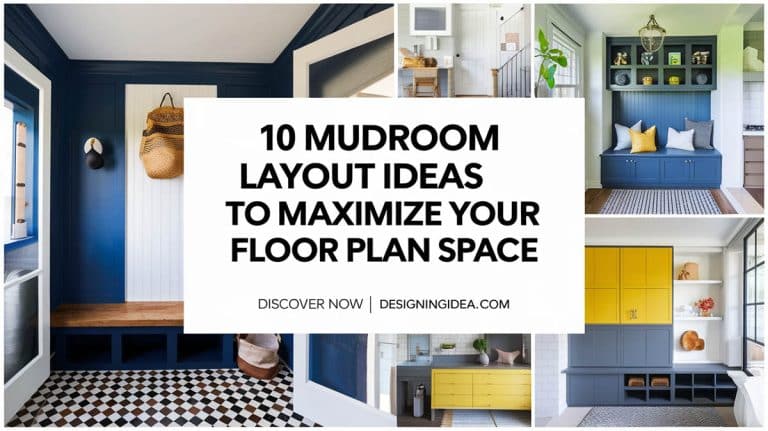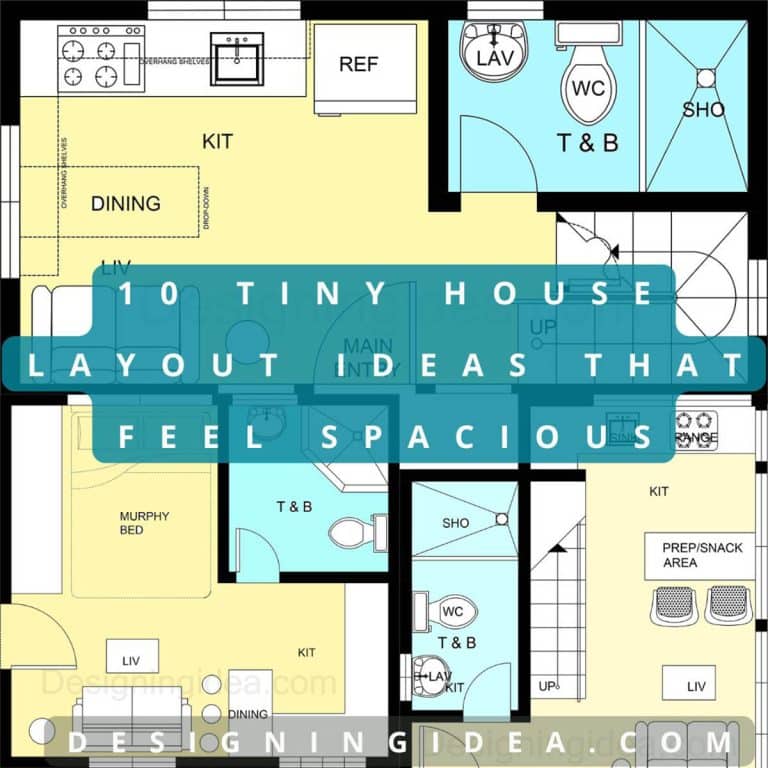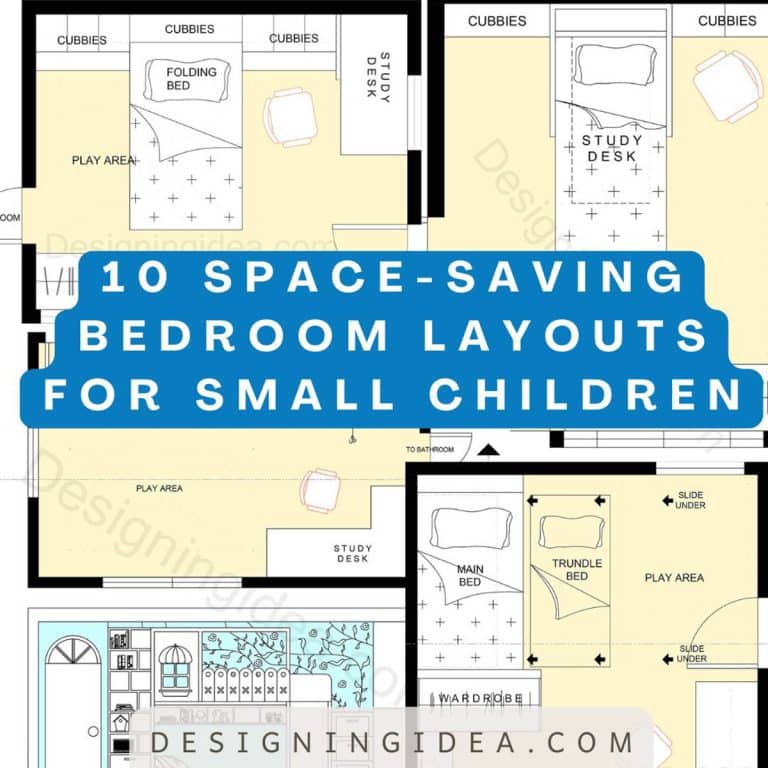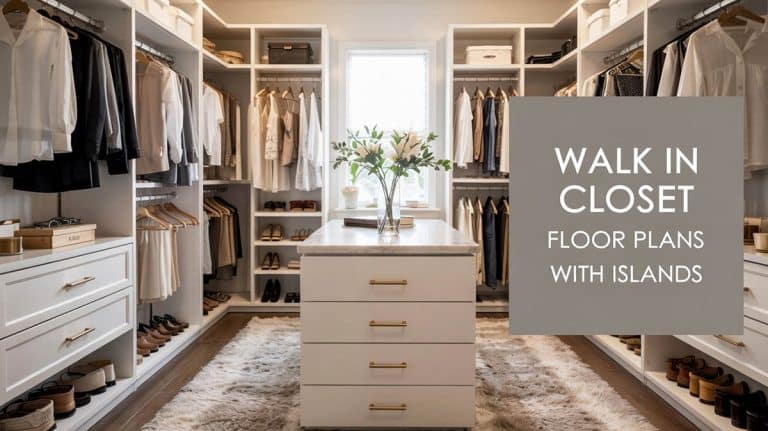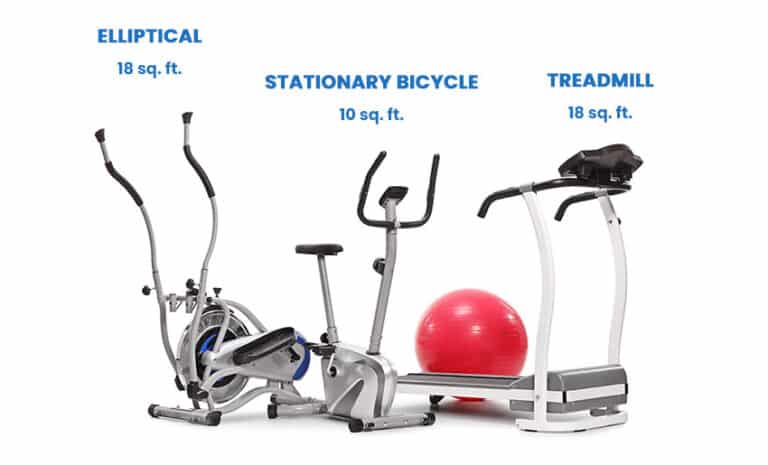5 Pass-through Dining Room Layouts That Maximize Movement & Comfort
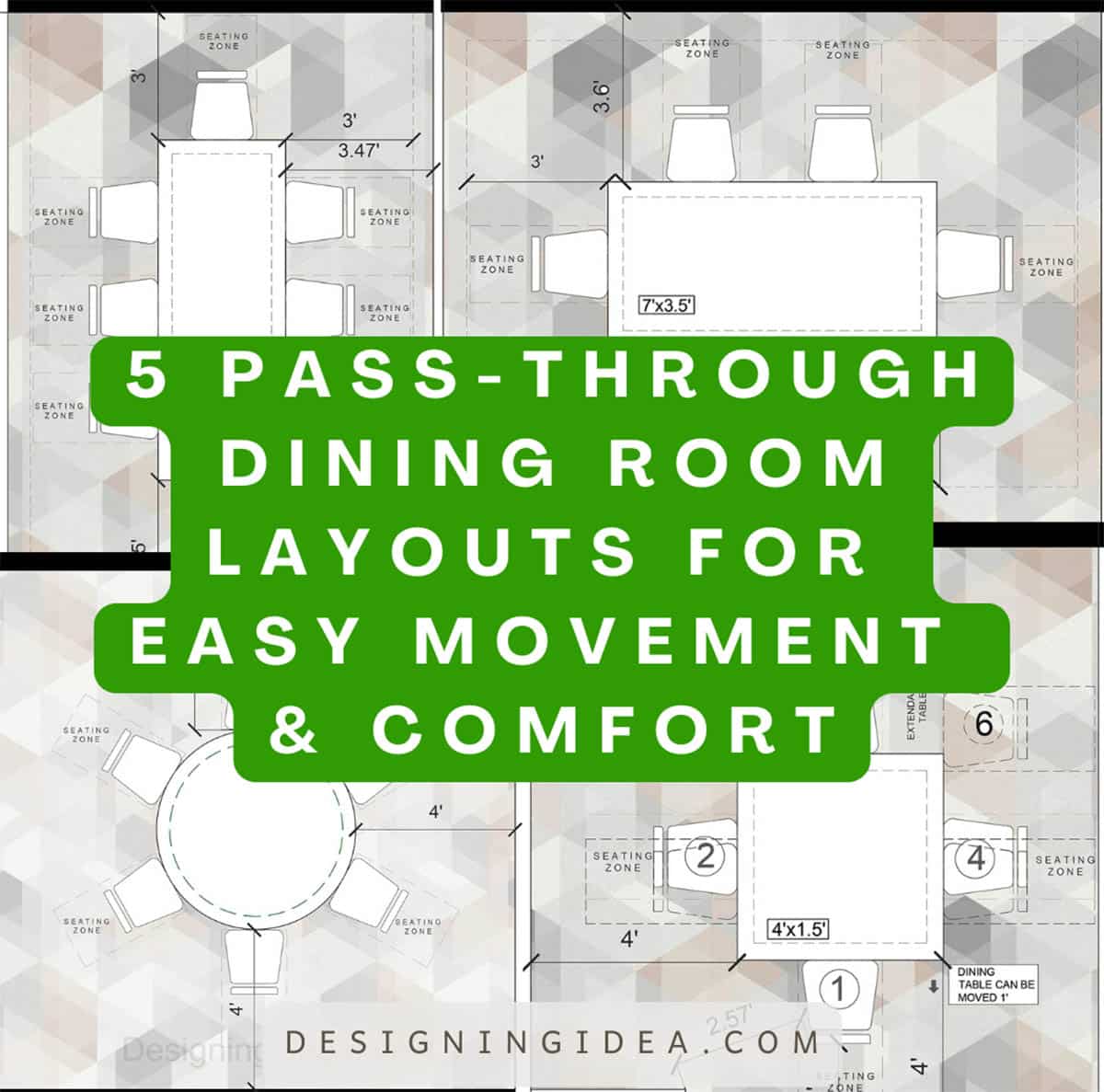
Are you looking for a dining room layout that sits between two areas, like a kitchen and a living room? These five pass-through dining room layouts combine functionality, style, and comfort, so that you can enjoy your dining space while still allowing ease of movement between rooms. Let’s explore some different designs you can use, whether you’re hosting, or faced with day-to-day navigating with kids and pets.
Central Table with Wide Walkways
By centering a slim table inside the room, you can create a formal and flexible dining zone where every guest enjoys a comfortable amount of space on all sides.
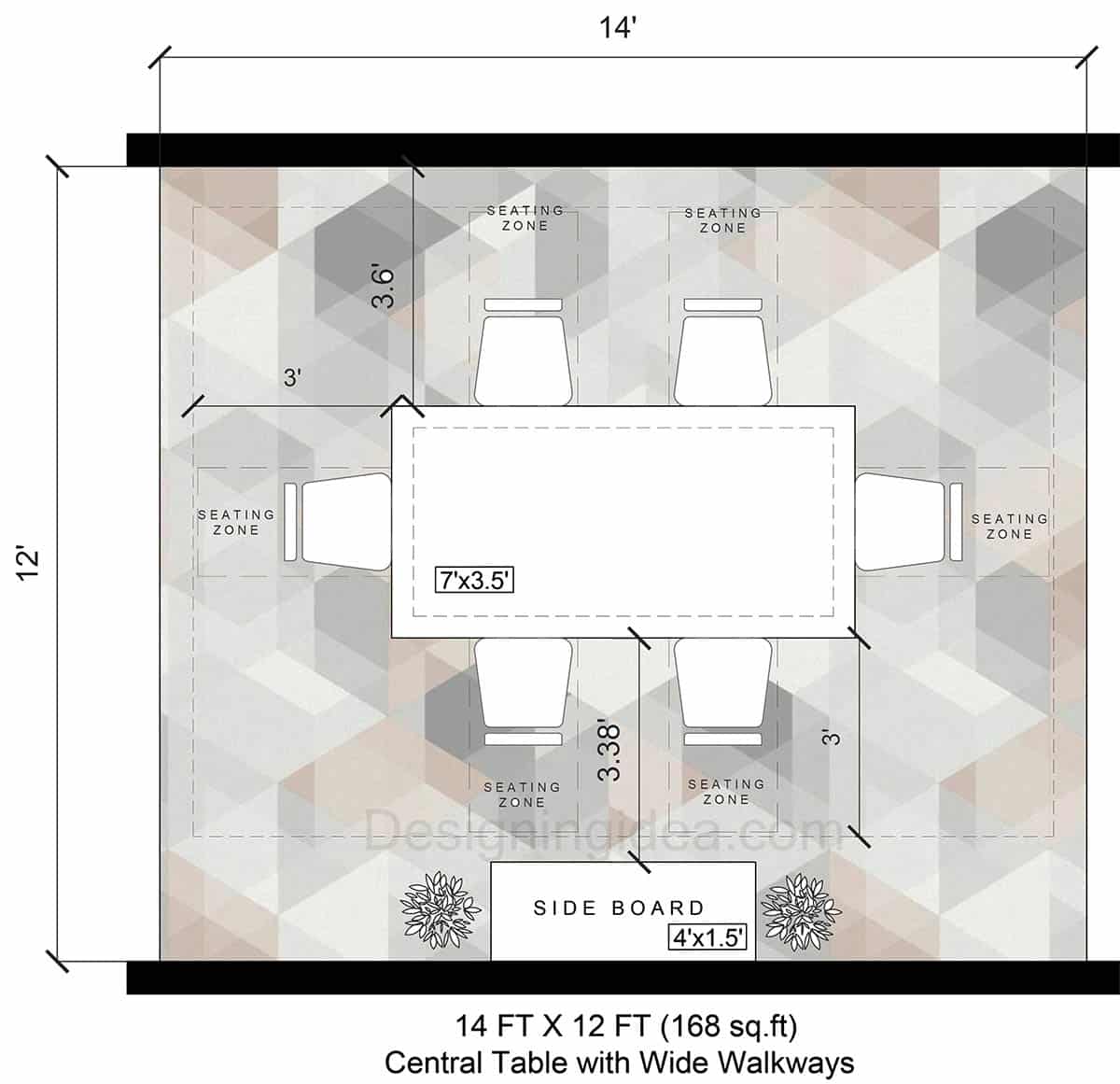
Floor Plan Details: This 14 ft W × 12 ft D dining room offers 168 sq ft of space and includes a 7 ft L × 3 ft 6 in W rectangular table. It is centered in the middle and seats a total of six with two on each long side, and one at each end. The dashed “seating zones” shows how chair-backs are kept inside a 30-inch band of movement. Placed at the mid-point on the lower wall sits a sideboard measuring 4 ft L × 18 in D. The design works best for those who like to entertain, families with young kids, mobility-impaired users, or those with frequent pet traffic, thanks to the 3-ft circulation lane all the way around.
Dimensions:
- Room Size: 14′ x 12′ (168 sq. ft.)
- Table: Rectangular, placed centrally (7′ x 3.5′).
- Seating: 6 chairs spaced around the table (2 on each long side and 1 on each end).
- Traffic Flow: Provide walkways of at least 3 feet around all sides of the table.
- Furniture Placement: Narrow sideboard (4′ x 1.5′) against one wall for minimal obstruction.
Design Tips:
- Lighting. Hang a linear pendant above the middle of the table; mount it 30 to 34 inches above the tabletop so as not to block views.
- Rug sizing. Use an 8 × 10 ft rug to allow chairs stay on the rug when pulled out, and preventing tripping edges.
- Chair choice. Choose armless or low-arm designs that tuck fully under the table, to allow for the measured clearances.
- Accent wall. Enhance the look with paint or wallpaper on the wall behind the sideboard to visually widen the 12-foot depth.
- Storage strategy. Use a piece with shallow drawers or basket cubbies in the sideboard for napkins & serving ware.
Pros:
- Symmetrical and balanced design that looks appealing.
- Provides 3′ walkways on all sides to ensure smooth movement.
- A narrow sideboard allows for storage.
Cons:
- In a 14′ x 12′ room, a 7′ x 3.5′ table may feel slightly large if other furniture is used.
- If the room connects two high-traffic areas (a kitchen and a living room), there may be some congestion when the chairs are in use.
Long and Narrow Dining Layout
Seat up to eight people by pairing a slender 8 × 3-foot table in a long-and-narrow 16 × 10-foot room with a pass-through zone on either side.
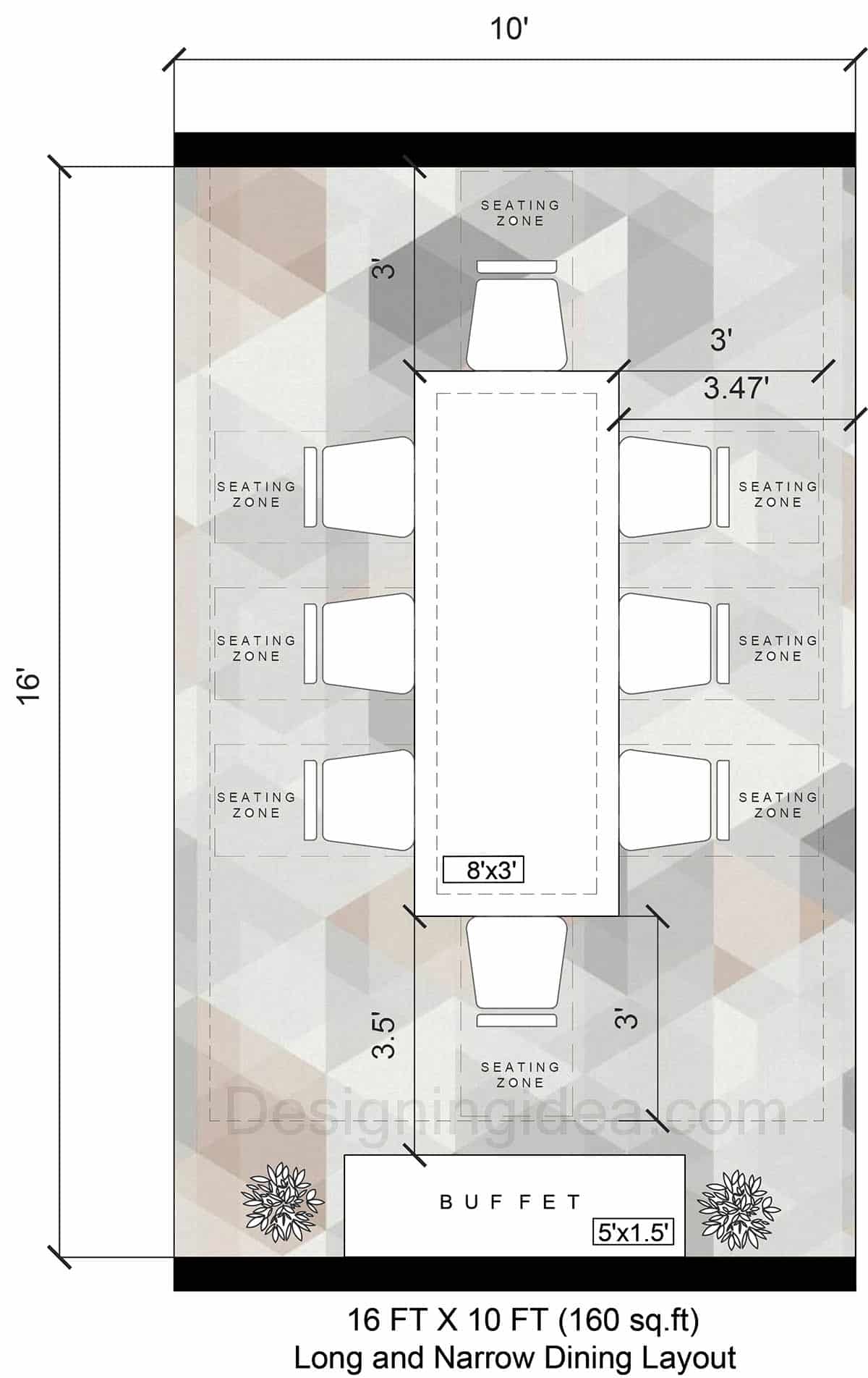
Floor Plan Details: The room is a rectangular 16-foot long and 10 feet wide, so every inch of width matters. By using a slim 8 ft × 3 ft banquet-style table that runs lengthwise down the center, you can manage a pass-through aisle on the top and bottom. On each long side, there are three armless chairs that can tuck underneath to create a 3-ft circulation lane between the pulled-out chair-backs and the walls. at about 3 ft 5 in). At the lower end, a 5 ft × 18 inch buffet floats against the wall. By removing this, the lower side becomes substantially roomier. This layout is perfect for town-house or condo owners dealing with a “bowling-alley” dining space. It’s also recommended for families that need to seat eight often but don’t want to sacrifice walk-through space.
Dimensions:
- Room Size: 16′ x 10′ (160 sq. ft.)
- Dining Table: Long rectangular table (8′ x 3′).
- Seating: Seats 8 people with three chairs on each side, and one at each end.
- Traffic Flow: Keep at least 3 feet of walkway along both longer sides, allowing for an easy access and pass-through.
- Furniture Placement: Slim buffet (5′ x 1.5′) at the far end, or none to maximize space.
Pros:
- Fits the elongated shape of the room well.
- 3′ walkways along the sides and more on the lower wall with no buffet.
- The slim buffet at the far end provides storage.
- Excellent for combining two spaces like a kitchen to a living area.
Cons:
- If the room is a main thoroughfare, people may still brush against guests.
- An 8′ table may feel too long for some, one could shorten this to 7′ if needed.
Round Table With Seating For Six And A Central Focus
Six diners can converse easily in this 13 x 13 foot room by using a 5-foot round table in the middle to provide a roomy 4-foot ring of circulation to help keep the space feeling open, balanced, and accessible.
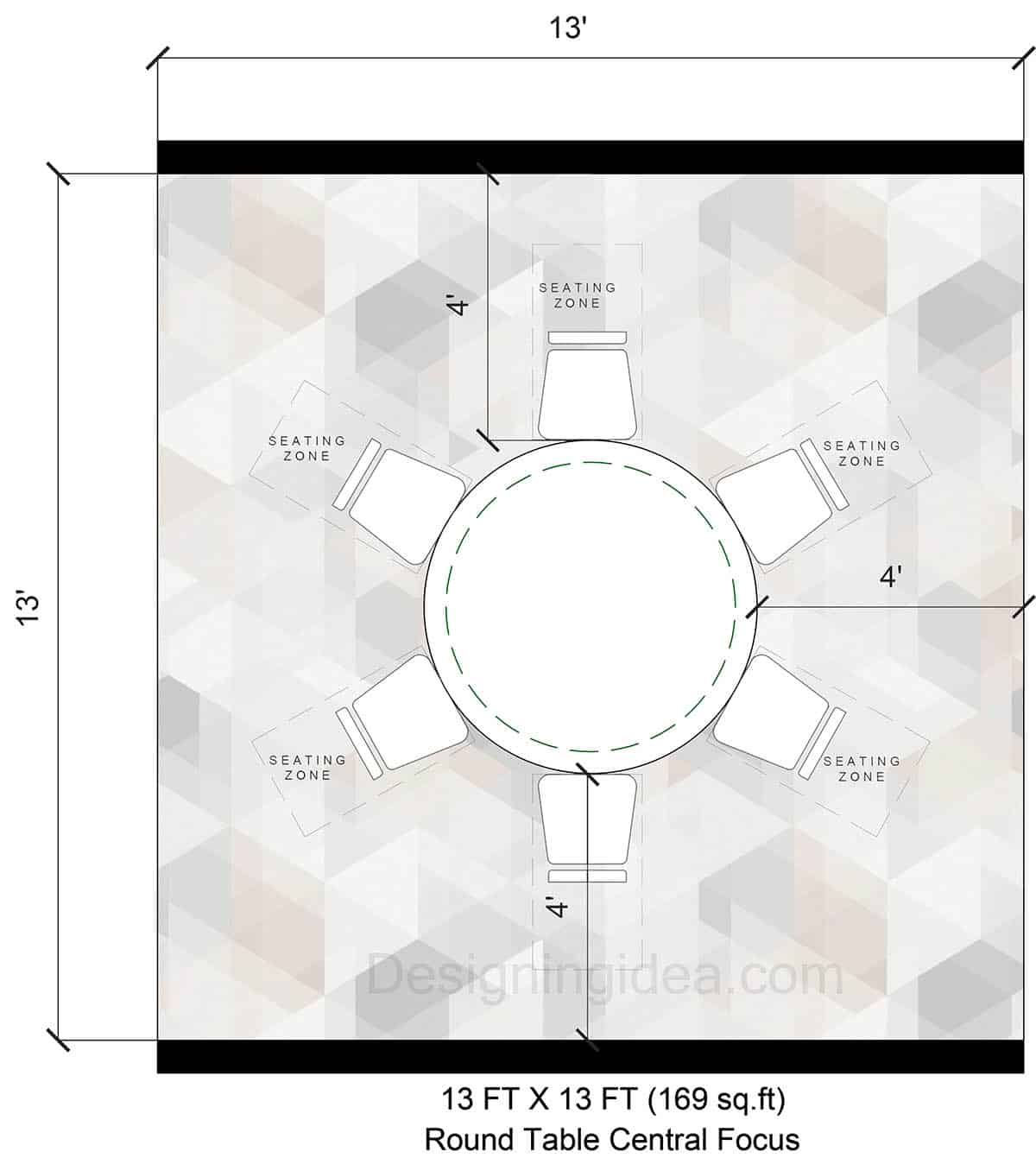
Floor Plan Details: This square, 13 x 13 ft (169 sq ft) room is paired with a 5 ft-diameter (60 inch) round table positioned in the middle to accommodate six diners. Because the table is centered, every wall benefits from a 4-ft (48 in) circulation lane. This allows guests to slide chairs out, rotate, and stand without brushing into anything. the six armless chairs are evenly spaced around the table, and when tucked in, their backs remain inside a dashed “seating zone” to provide walking room. This design is ideal for conversation-lovers who want every diner to maintain eye contact and have equal reach to the dishes. Families with mixed mobility use will appreciate the continuous 4-ft walkway that is wheelchair-friendly and safe for small kids circling the table.
Dimensions:
- Room Size: 13′ x 13′ (169 sq. ft.)
- Dining Table: Round table (5′ diameter) ensures softer edges for passersby.
- Seating: Seats 6 people evenly spaced around.
- Traffic Flow: A 4-foot-wide perimeter walkway gives easy circulation.
- Furniture Placement: Add a small console table (3′ x 1′) against one wall for additional storage without influencing traffic flow.
Pros:
- A round table (5′ diameter) encourages conversation and traffic flow (no sharp edges).
- 4′ walkways provide plenty of space for movement.
- Everyone can reach dishes equally.
Cons:
- Seating capacity may be limited compared to a rectangular table.
- If the room is a major pass-through, people might still weave around those seated. Push the table more to one side to allow a bigger aisle if needed.
Corner Dining Table Layout
By positioning a square table slightly into one corner, this 12 × 11 ft room seats six comfortably while still letting traffic flow straight through.
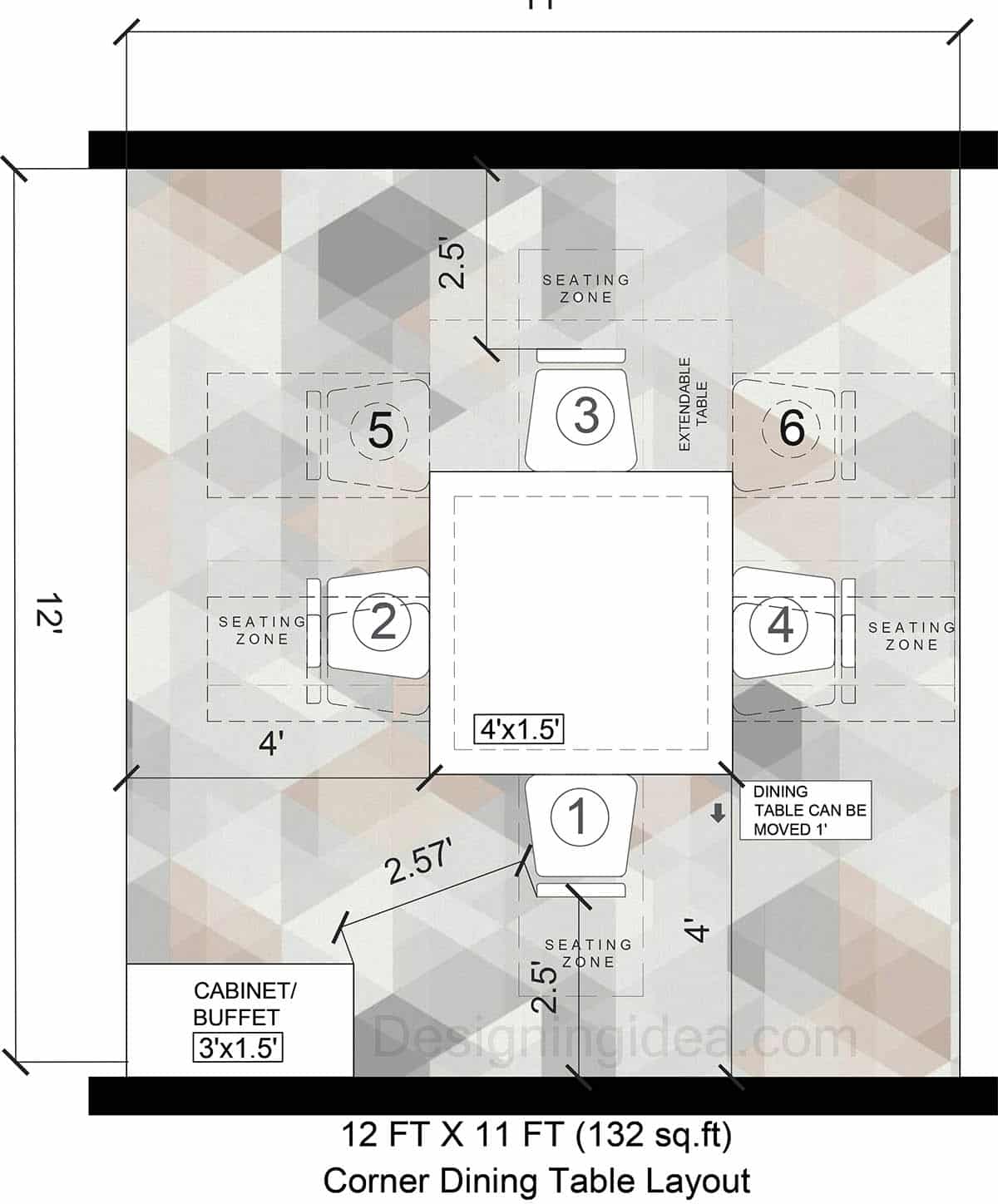
Floor Plan Details: This compact 132 sq ft room is better utilized by pushing an extendable 7 ft × 3 ft (collapsed 4 ft × 3 ft) table toward the top-right corner instead of centering it. This placement and design frees a diagonal pathway from the entry (bottom-left) to the opposite corner, so you can move about without having to snake around the backs of chairs. At the head and foot, the space tightens to about 2 ft 6 in, but the floor plan deliberately leaves a spare inch to slide the table if you need a smidge more knee room. A shallow 3 ft × 18 inch buffet cabinet is placed in the bottom-left, maintaining a 2 ft 7 in aisle. Six numbered seats ring the table, with three on the side with the wider walkway, and one on each remaining side, so no one is trapped in a corner. This dining room layout is perfect for smaller apartments and starter homes where the area doubles as a thoroughfare to another space. It works well with households of four that occasionally host up to six, thanks to the pop-out leaf on the table.
Dimensions:
- Room Size: 12′ x 11′ (132 sq. ft.)
- Dining Table: Square table (4′ x 4′) is positioned slightly towards one corner.
- Seating: Seats 4 comfortably, and can be expandable to 6 if required.
- Traffic Flow: A wide passageway of 4 feet on two sides of the room allows traffic flow through the space.
- Furniture Placement: Add a small cabinet or buffet (4′ x 1.5′) (3’ 1.5’) along the shortest wall for storage.
Pros:
- Maximizes available space in a smaller room.
- The diagonal traffic flow feels natural and open.
- Flexible seating (expanding to 6 if needed for extra guests).
Cons:
- Can feel cramped if expanded to the full capacity of 6 seats.
- Corner placement could make the room feel lopsided if not balanced with decor or furniture.
Offset Rectangular Table Floor Plan
Sliding the table a foot off from the center allows for a free-flowing pathway on one side while still seating six comfortably.
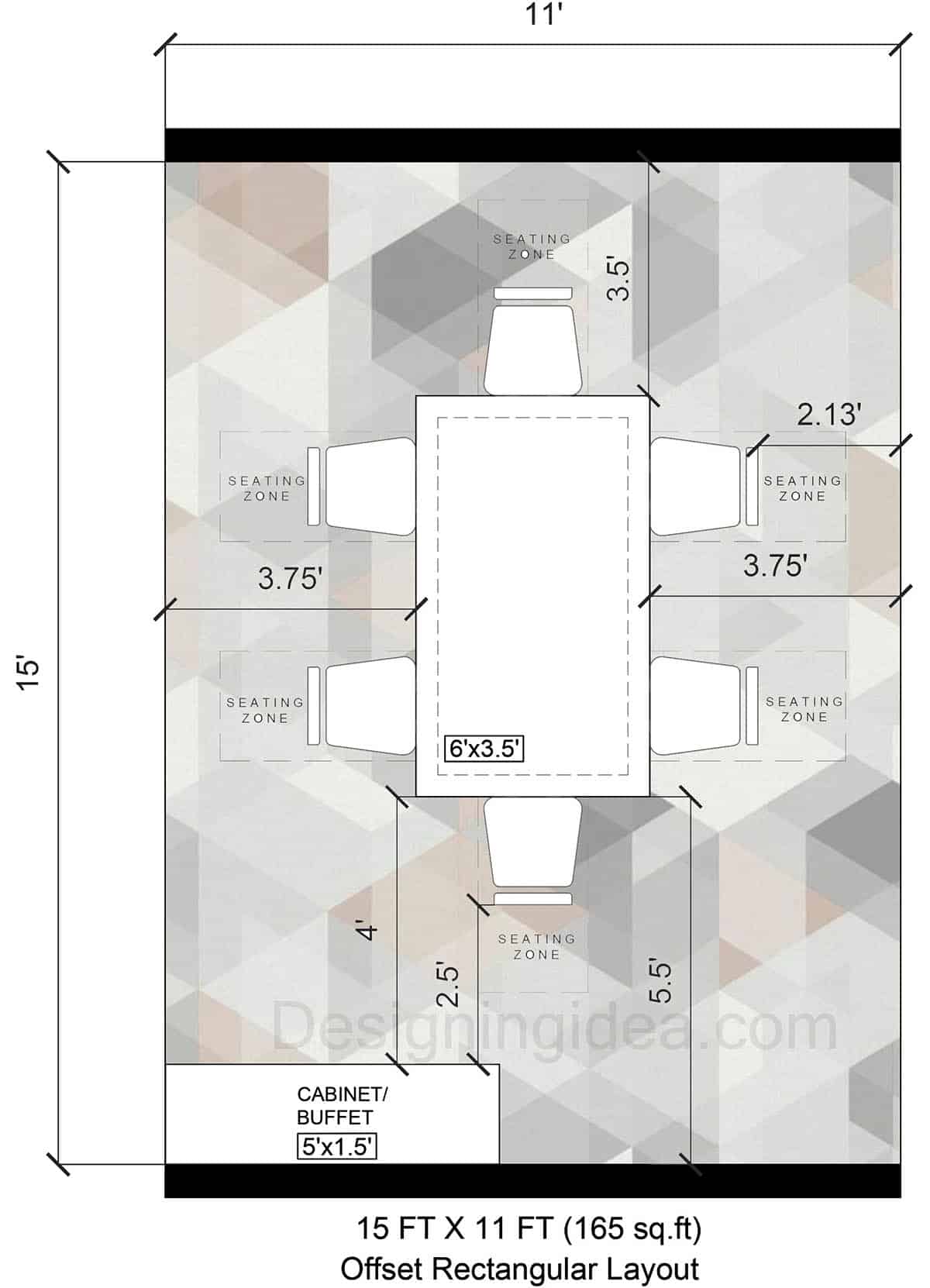
Floor Plan Details: Inside this 165 sq ft dining room, a 6 ft × 3 ft 6 inch rectangular table is slightly positioned toward the upper wall to create a large walkway for through traffic. That shift creates a 3 ft 9 in traffic lane along the lower side, wide enough for two people to pass. (without the buffet) At the sides, the chairs receive 3 ft 6 inch of breathing room. A 5 ft × 18 inch cabinet can be tucked into the bottom-left corner at the expense of a larger aisle. Around the table, six armless chairs are placed (two per side, one at each end), so no seat feels cramped, and they provide an asymmetrical feel. The layout is ideal for homes where the dining room doubles as a hallway. It’s effective for families of five or six who need everyday seating but want space to easily walk by.
Dimensions:
- Room Size: 15′ x 11′ (165 sq. ft.)
- Dining Table: Rectangular (6′ x 3.5′) and placed offset slightly toward one side.
- Seating: Seats up to 6 people comfortably.
- Traffic Flow: 5 feet of space along the bottom without the buffet (primary traffic lane), and about 3 feet on the opposite side with the chair tucked in.
- Furniture Placement: Buffet or narrow hutch (5′ x 1.5′) can be used if you don’t need a larger corridor.
Pros:
- Offers a primary walkway (3.5′) for high-traffic zones.
- The offset table prevents the room from feeling too tight & rigid.
- The buffet placement provides storage if needed and doesn’t affect the flow too much.
Cons:
- The 3′ walkway might feel a little tight if chairs are pulled out.
- Requires intentional furniture placement to avoid imbalance.
Which Dining Floor Plan to Use?
- Best for large pass-through spaces: Central Table (1) or Round Table (3).
- Best for narrow rooms: Long & Narrow Layout (2).
- Best for small rooms: Corner Layout (4).
- Best for high-traffic zones: Offset Rectangular (5).
All five layouts make sense as long as care is used with the furniture proportions and walkways sizes are maintained. The key is ensuring at least 3′ of clearance for all main pathways and avoid using any bulky furniture that blocks flow. Check out this page for more small living and dining combined designs.


